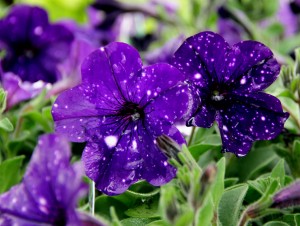Though not strutting the runway or preening in front of mirrors, plants make a splash every year just like the latest fashions.
And like clothes, plants need cache to capture the audience. Sometimes popularity comes with a new trait like color, size or shape. Sometimes it’s a plant much of the public has never heard of before, like this year’s entry, an herb from New Guinea with edible leaves that taste like mushrooms.
“People like what’s new or different,” said Claudia Groth, an Oregon State University Extension Service master gardener for more than 25 years. “It’s the human condition. We want what’s trending.”
Plant buyers at garden centers make educated choices as they cruise nursery tradeshows, chat with salespeople and generally get a bead on new introductions or unusual plants about to hit the market. With hundreds of varieties to choose from, marking up the order sheet can be a gamble, said Groth, who staffs the information desk at Portland Nursery.
“Trends come and go, but if you’re familiar with the market and keep up with those trends, you usually know what people are looking for,” she said.
Sometimes it’s pretty easy, like Weigela ‘Tuxedo,’ a shorter, extremely dark-leafed version of its brethren, or ‘Pretty in Pink’ hebe, again a smaller shrub with burgundy-tipped new growth and pink flowers. Both enjoyed a horde of media attention and turned into extremely good sellers.
It all starts in the breeders’ minds. If they produce a plant that grabs the industry’s eye, gardeners will open their wallets and buy.
“Breeders are in charge,” Groth said. “If they do the marketing right, they can really push something.”
So far this year, gardeners like the color purple, unusual vegetables and the continuing theme of smaller plants for smaller spaces. Here are six plants Groth choose that are showing popularity this season:
Verbena ‘Lascar Black Velvet’: A compact, mounding verbena that’s ideal for containers and hanging baskets, especially mixed with white or intense pink. “I can’t believe how deep purple it is,” Groth said. “It sits on the information desk and all day long people stare at it.”

Hosta ‘Mini Skirt’ and Hosta ‘Lakeside Paisley Print’: There’s no question, hostas are hot. And these two have the added benefit of small size going for them. ‘Mini Skirt’ is a mere 5 to 7 inches high, while ‘Paisley Print’ grows to 12 inches. ‘Mini Skirt’ boasts bluish-green leaves with a creamy edge. The shiny green foliage of ‘Paisley Print’ draws attention to itself with creamy white centers that feather out into wavy green margins. Both are fantastic for smaller gardens and containers.
Mashua (Tropaeolum tuberosum): A nasturtium from the Andes, mashua grows edible tubers rich in vitamin C that can be eaten raw, but are usually cooked like a potato and have a flavor comparable to turnips. Similar to common nasturtium, the plant is vining and can grow up to 8 feet on a structure. The orange or orange-and-yellow flowers are trumpet shaped and also edible. “It’s highly decorative,” Groth said.
Mushroom plant (Rungia klossi): Certainly the most unusual of this year’s unveilings, the mushroom plant is a perennial herb from New Guinea packed with vitamin C and beta-carotene. The crisp, bright green, mushroom-flavored leaves go raw into salads or sandwiches or can be added to soups and stir fries. It likes shade in the garden, according to Groth, or can be kept indoors.

